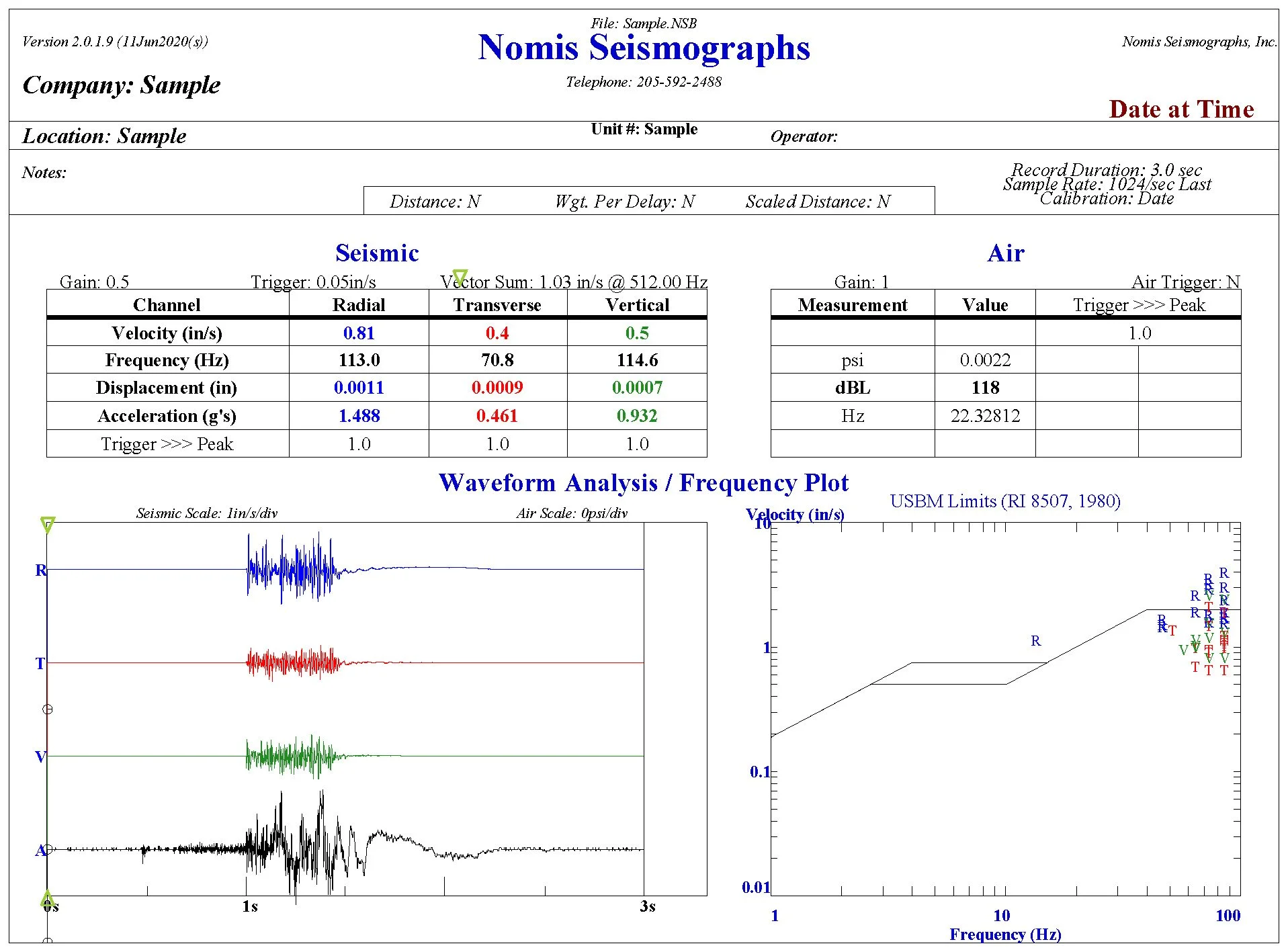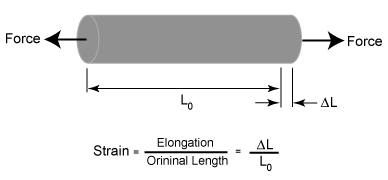Blast Vibration Basics Post #2
Blast Vibration Variables
This is the second post in a series on blast vibration basics. Blast vibrations are an important concept to understand because all blasts produce vibrations and, in some cases, those vibrations will annoy neighbors or potentially damage nearby structures. However, in today’s environment, blast vibration damage is extremely rare due to the regulatory limits placed on blast vibrations from blasting and other construction activities.
This post focuses on variables that are important when evaluating blast vibrations and their potential for damage.
What Blast Vibration Variables are Important?
The two most important blast vibration variables to consider are the amplitude and frequency. These terms should be familar to those of you familiar with vibrations, sound waves, or any other sort of wave. There are some nuances to each term when using them to describe blast vibrations. This article will explain each term and how they are important for ground vibration analysis.
Particle Velocity and Frequency.
Ground vibrations are typically measured using blasting seismographs, which will be covered in a later post. Blasting seismographs record vibrations as they pass the monitoring location. A seismograph outputs a vibration waveform, which can be used to identify the ground vibration particle velocity (amplitude) and frequency. Seismographs measure and report data on three axes. The vertical (up and down), radial or longitudinal (horizontally toward and away from a blast), and the transverse (horizontal and perpendicular to the radial direction).
Analogy
Particle velocity is often compared to a floating bobber.
If you throw a rock into a pond next to a bobber, waves or ripples will emanate out from where the rock impacted. The impact of the rock is analogous to a blast and the waves are analogous to blast vibrations. Blast vibrations radiate out from a blast, the same as the ripples on the pond.
The bobber can be compared to a seismograph’s geophone. The bobber is moving in one location; wherease, a geophone measures vibrations in one location.
The velocity that a bobber moves up and down is analogous to the particle velocity of a vibration (the velocity that the geophone moves up and down or side to side when a vibration passes). The distance the bobber moves is displacement, which is not measured by a geophone, but it can be calculated using the particle velocity and frequency (see below).
The frequency is number of times that the bobber moves up and down in one second.
Image source: pinterest/svgsprite.com
The peak particle velocity for a vibration is usually listed in a seismograph report or seismogram. The peak particle velocity is a vibration’s maximum or minimum recorded particle velocity. In other words, it can be positive or negative. In the blast vibration report to the right, the peak particle velocity is 0.81 in/sec.
Frequency is the number of cycles of a vibration per second. If a vibration has five peaks and five troughs in one second, the frequency is 5 Hz. Frequency is calculated by identifying the length of a cycle of a vibration in seconds. Assume the peak-to-peak time of a vibration is 0.01 seconds. The frequency is 1 divided by the time, or the inverse of 0.01 seconds, which is equal to 100 Hz.
The principal frequency is the frequency of the peak of the particle velocity. The principal frequency is calculated using the zero-crossing frequency method, which is calculated by identifying the start of a peak as the vibration crosses 0 in/sec, identifying the end of a peak as the vibration crosses back over 0 in/sec, calculating that time and multiplying the time by 2 (making the assumption that the peak is sinusoidal). Taking the inverse of the doubled time provides the frequency. In the blast vibration report to the right, the principal frequency is 113 Hz. For 113 Hz, the peak vibration would have started at a certain time, the vibration would have crossed back over 0 in/sec about 4.4 milliseconds after the start. Two times 4.4 is 8.8 milliseconds. The inverse of 8.8 milliseconds (0.0088 seconds) is 113.6 Hz (slightly off of 113 Hz due to rounding error).
Dominant frequency is another term that refers to the most dominant frequency content of a vibration waveform. The dominant frequency is typically found using a Fast Fourier Transform (FFT). The FFT converts a vibration from the time domain (the x-axis of the vibration plot is time) to the frequency domain (the x-axis of the FFT plot is frequency). The FFT plot gives a spectrum of frequencies that are contained in a vibration waveform. The peak of that plot is the frequency with the most energy, or the dominant frequency. Oftentimes, the principal and dominant frequency can be the same value, especially if the peak particle velocity is the only major spike in the vibration waveform (meaning that spike/frequency contain the most energy).
Source: https://www.nde-ed.org/Physics/Materials/Mechanical/StressStrain.xhtml
Why Peak Particle Velocity and Frequency?
Strain (a way of defining displacement) causes damage to materials, not velocity. But strain is a function of particle velocity and frequency. Therefore, in order to determine the likelihood that a vibration’s particle velocity will damage a structure, one must identify the frequency because the frequency is equally important as the particle velocity.
Other Terms.
Particle acceleration is the derivative of the particle velocity waveform. In the bobber example, it is the acceleration of the bobber moving up and down. Acceleration can be estimated by a = 2 * pi * f * v, where a is acceleration (in/sec-squared), f is frequency (Hz), and v is velocity (in/sec). In the blast vibration report at the top of this post, the acceleration is 2 * pi * 113 Hz * 0.81 in/sec = 575 in/sec-squared or 1.49 g.
Particle displacement is the integral of the particle velocity. In the bobber example, it is the distance that the bobber moves up and down. Displacement can be estimated by d = v / (2 * pi * f), where d is displacement (in) v is particle velocity (in/sec), and f is frequency (Hz). In the blast vibration report at the top of this post, the displacement is 0.81 in/sec / (2 * pi * 113 Hz) = 0.0011 inches. This is a displacement that is about one-quarter of the thickness of a piece of paper.
Duration is the length of time it takes for a vibration to pass the geophone. Typically the duration of a passing blast vibration is only a couple of seconds.
Propagation velocity is the speed that a vibration travels through the ground. It may also be termed the seismic velocity. In the bobber example, it is the speed the ripples move through the water. The propagation velocity is dependent on the geology.




